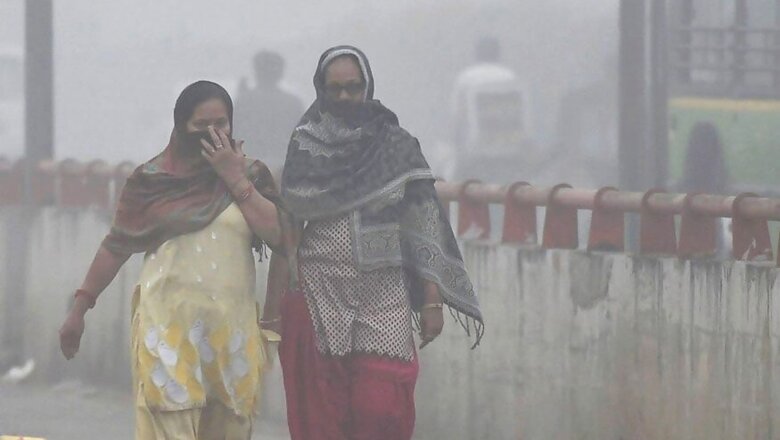
views
New Delhi: The air quality in Delhi on Thursday noon recorded an AQI (Air Quality Index) reading of 491 — the high end of the “severe” category. As fear and concern spread like the toxic smog outside, Delhiites have become familiar with terms such as PM10 and PM2.5 to describe their day and their well-being.
PM10 and PM2.5 simply mean particulate matter 10 micrometers or less and 2.5 micrometers or less in diameter, respectively. The Australian government’s National Pollution Inventory describes it best -- a human hair is 100 micrometers in diameter. It could fit 40 fine particles of PM2.5 in its width. These micro particles have been swimming in our air, entering our lungs and wreaking havoc in Delhi, especially in winters, the past few years. But where do they come from?
The IIT Kanpur report of 2016 — Comprehensive Study on Air Pollution and Green House Gases (GHGs) in Delhi — is, so far, the most comprehensive and reliable source of answering this question. Scientists do warn that air pollution data is dynamic and what may be the biggest pollutant this year may not be the next. However, it offers a close look at Delhi's worse culprits poisoning the air.
Note: Secondary particles are formed in the atmosphere because of reaction of precursor gases (SO2, NOx, and NH3), which is seen more in winter. Secondary particles and combustion particles from biomass burning, solid waste burning, vehicle emissions, chulhas, pet coke, etc, form a large chunk of PM2.5
PM10
Road dust, the biggest contributor to PM 10 is seen to be higher in summer than in winter. In summer, says the study, soil and ash ponds are dry and the high wind speed makes particles from these sources airborne. This, apparently, is why summer looks whitish to greyish. In winter, about 40% of PM10 comes from secondary particles and combustion related carbons.
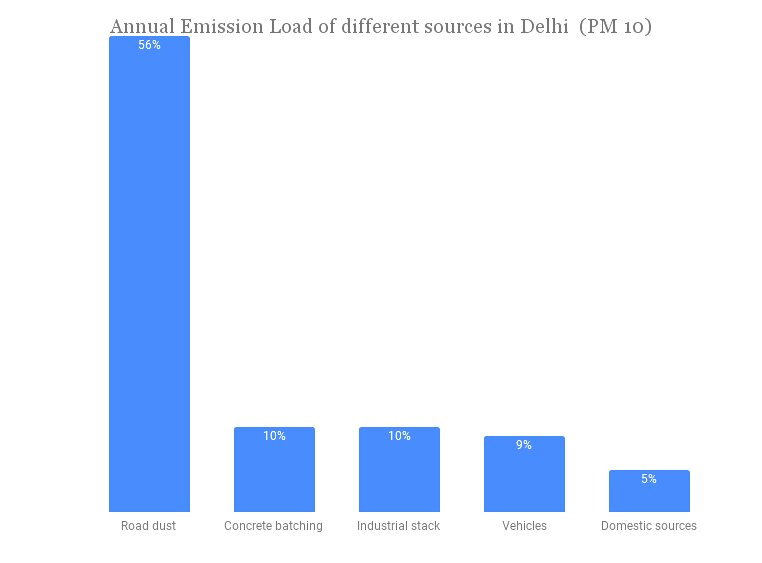
Annual Emission Load of different sources in Delhi
Road Dust: 56%
Concrete batching: 10%
Industrial stack: 10%
Vehicles: 9%
Domestic sources: 5%
PM2.5
Again, road dust and fly ash are significant contributors in summer, and secondary particles and combustion related carbons in summer
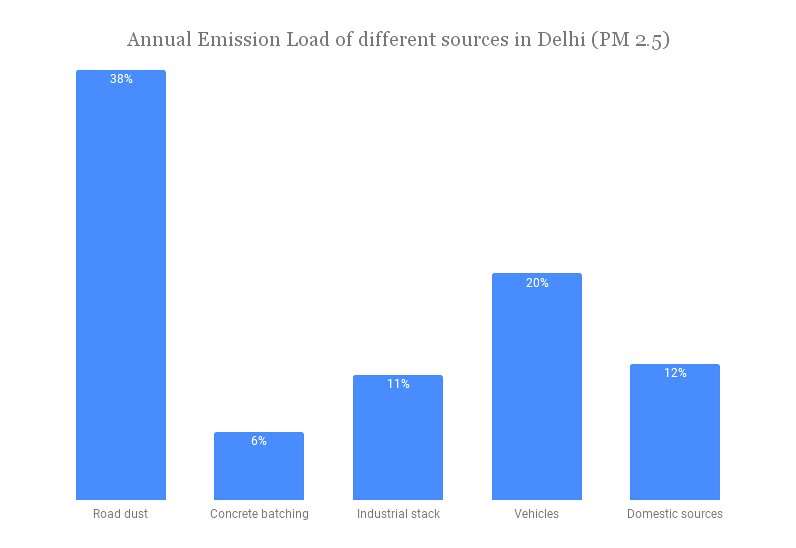
Annual Emission Load of different sources in Delhi --
Road Dust: 38%
Vehicles: 20%
Domestic sources: 12%
Industrial stack: 11%
Concrete batching: 6%
Since PM2.5 is the most highly concentrated pollutant during the bad winter days, a further seasonal beak down has been done.
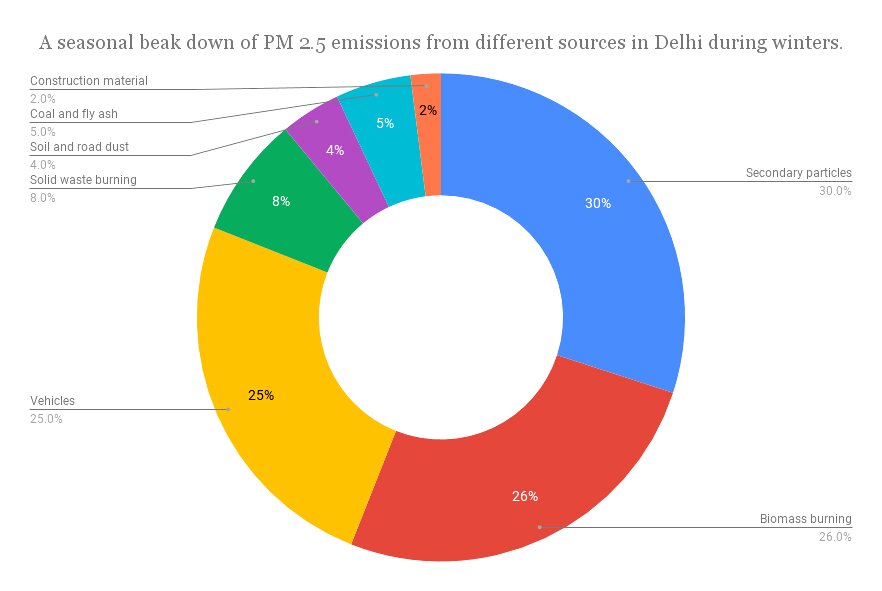
Winter
Secondary Particles: 30%
Biomass burning: 26%
Vehicles: 25%
Solid Waste burning: 8%
Soil and Road Dust: 4%
Coal and Fly Ash: 5%
Construction material: 2%
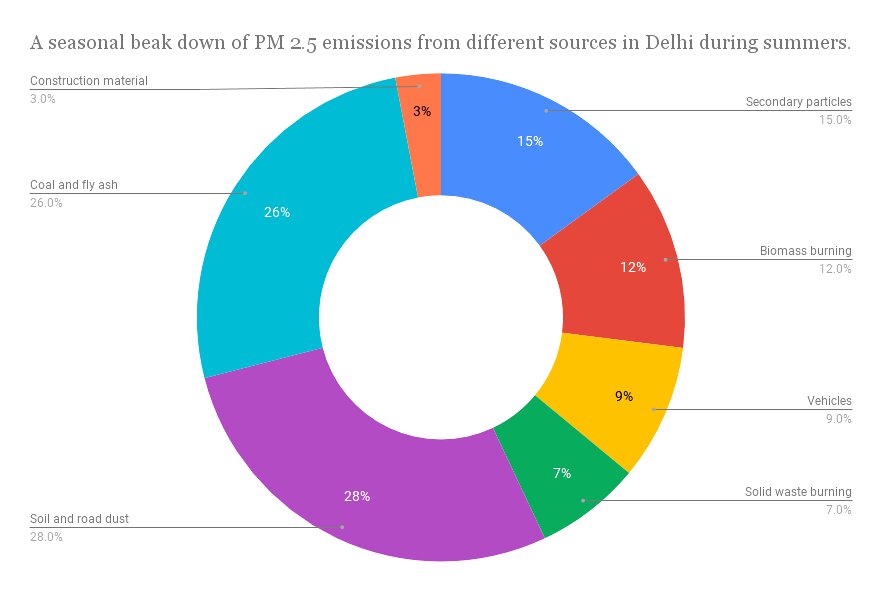
Summer
Soil and Road Dust: 28%
Coal and Fly Ash:26%
Secondary Particles: 15%
Biomass Burning: 12%
Vehicles: 9%
Solid Waste Burning:7%
Construction Material: 3%
NOx -- mainly nitrogen dioxide (NO2) emissions in Delhi –
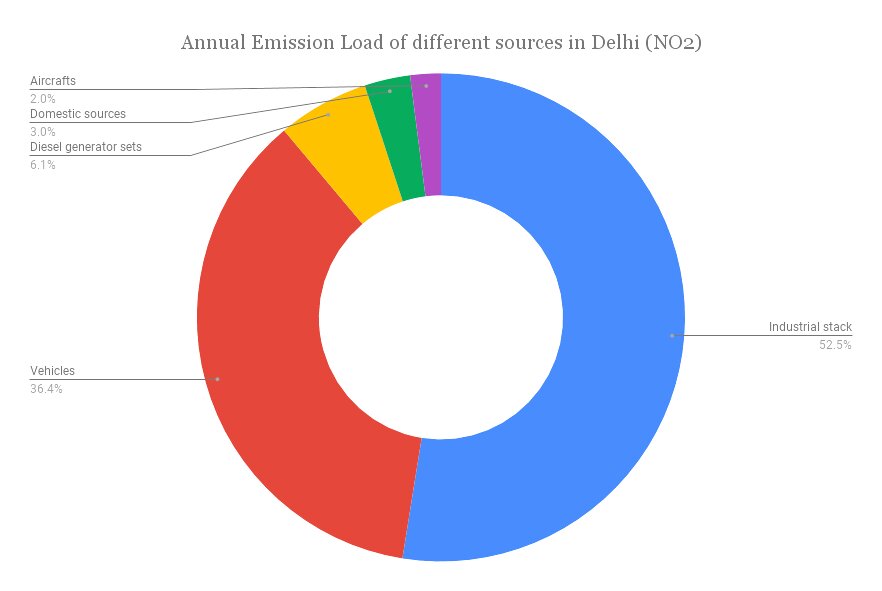
Itself a pollutant from industries and vehicles, NOx is doubly dangerous as it forms secondary particles, which are a large chunk of PM2.5
Annual Emission Load of different sources in Delhi -
Industrial stack: 52%
Vehicles: 36%
Diesel generator sets: 6%
Domestic sources: 3%
Aircrafts: 2%













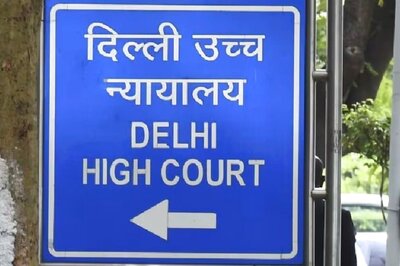



Comments
0 comment